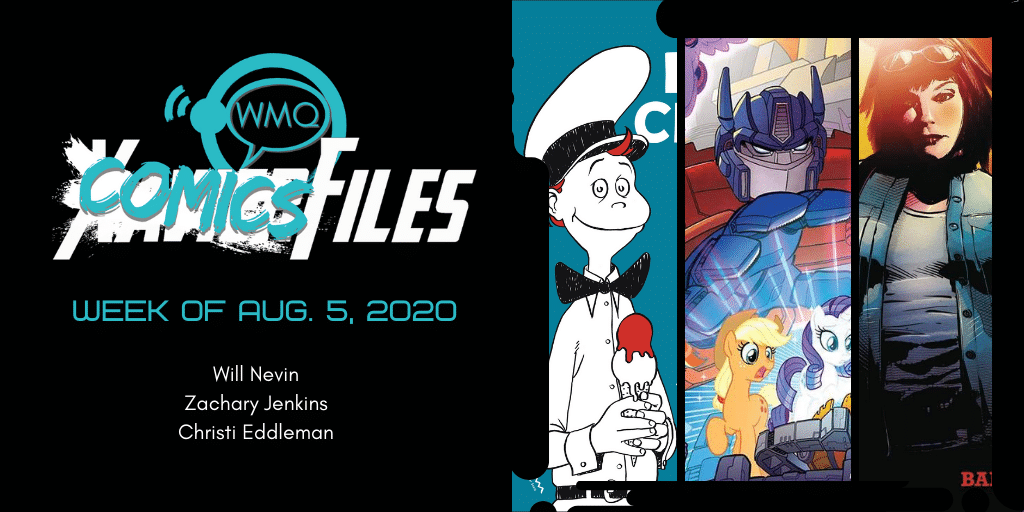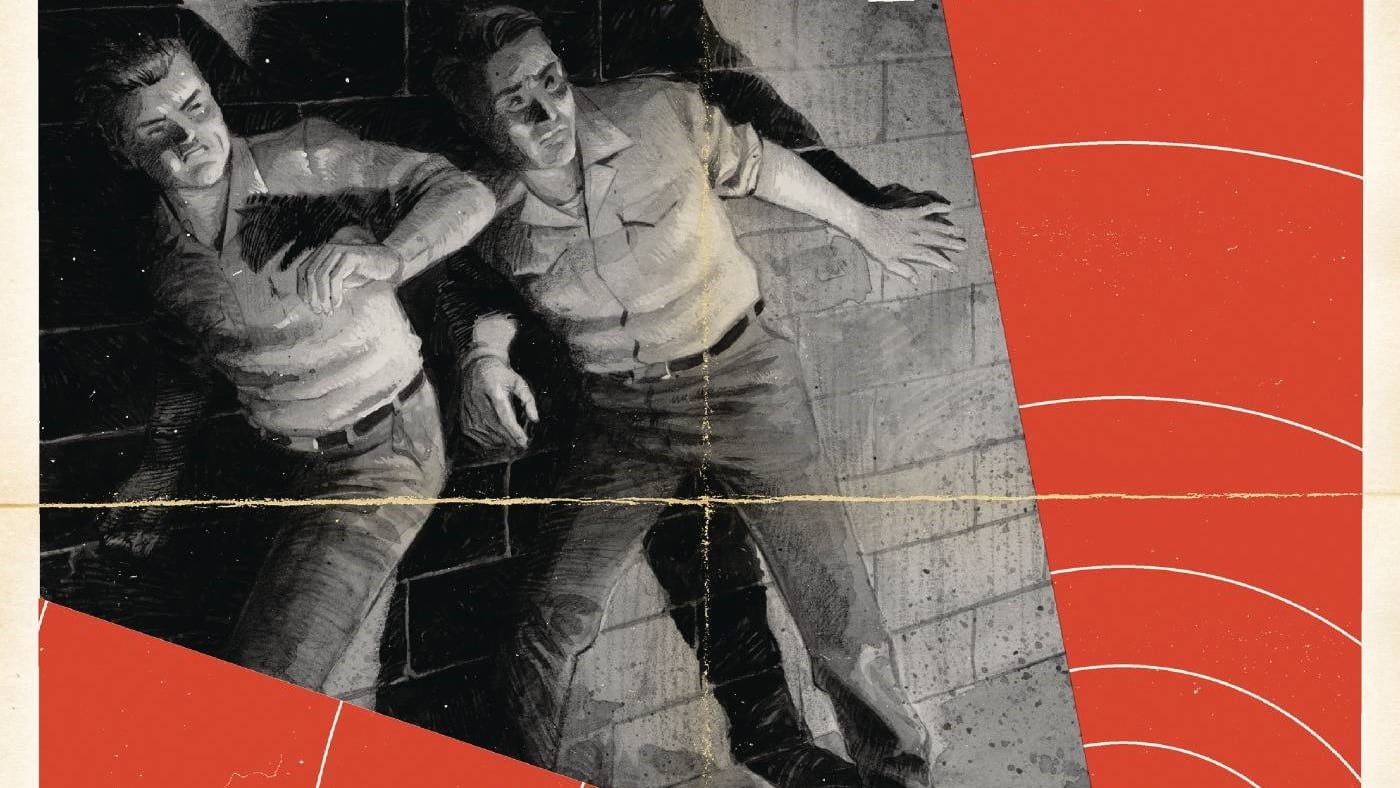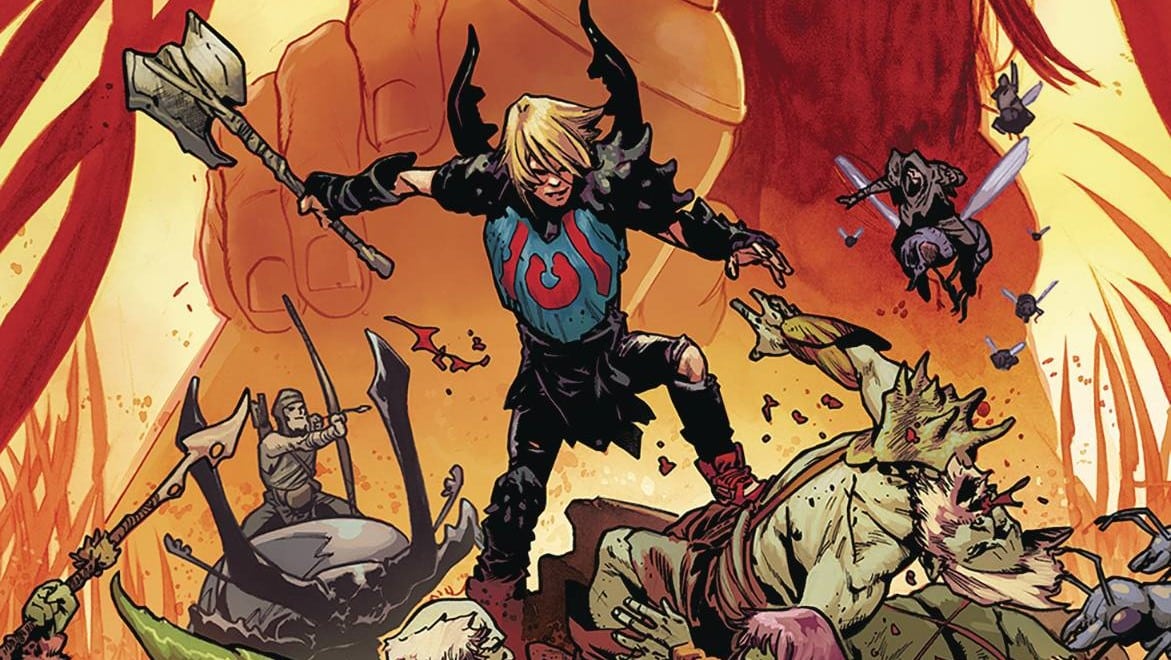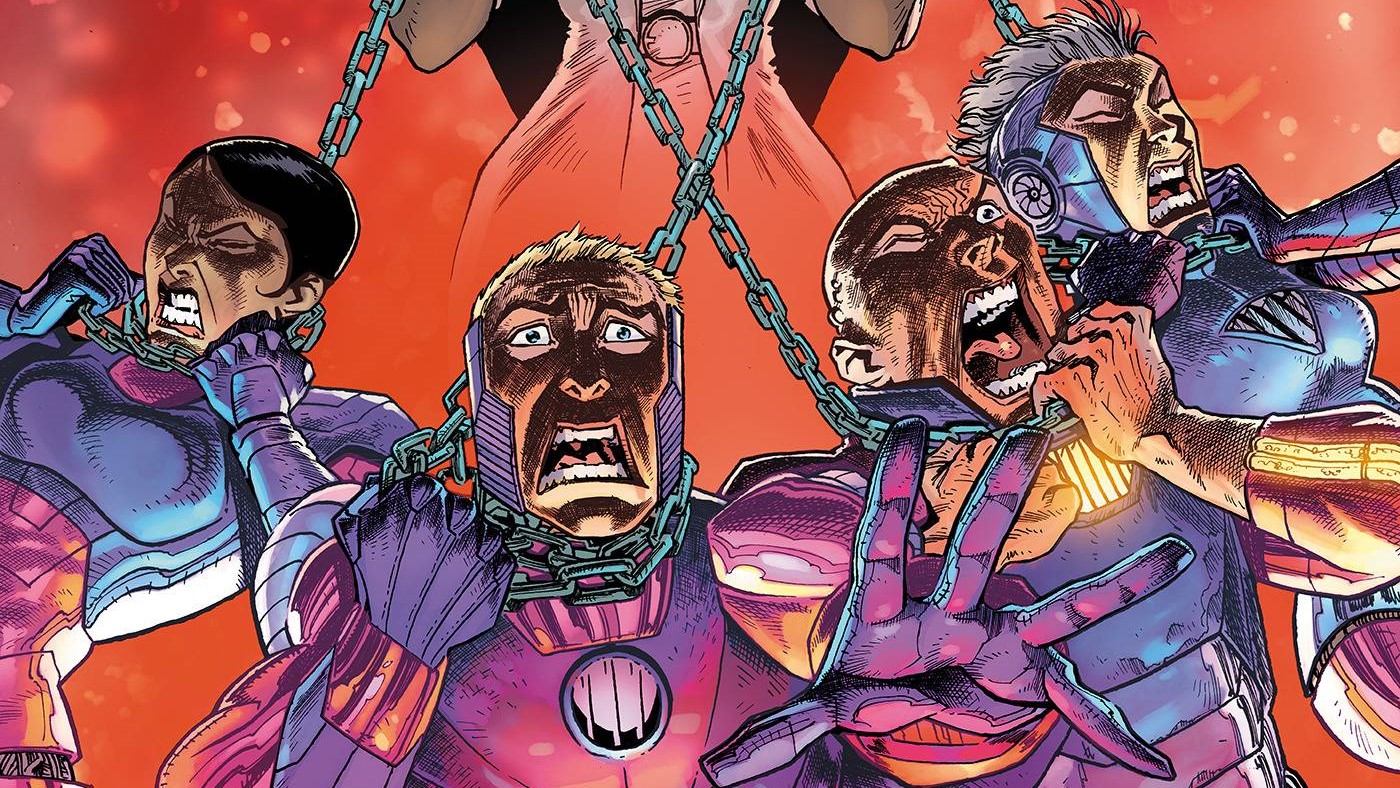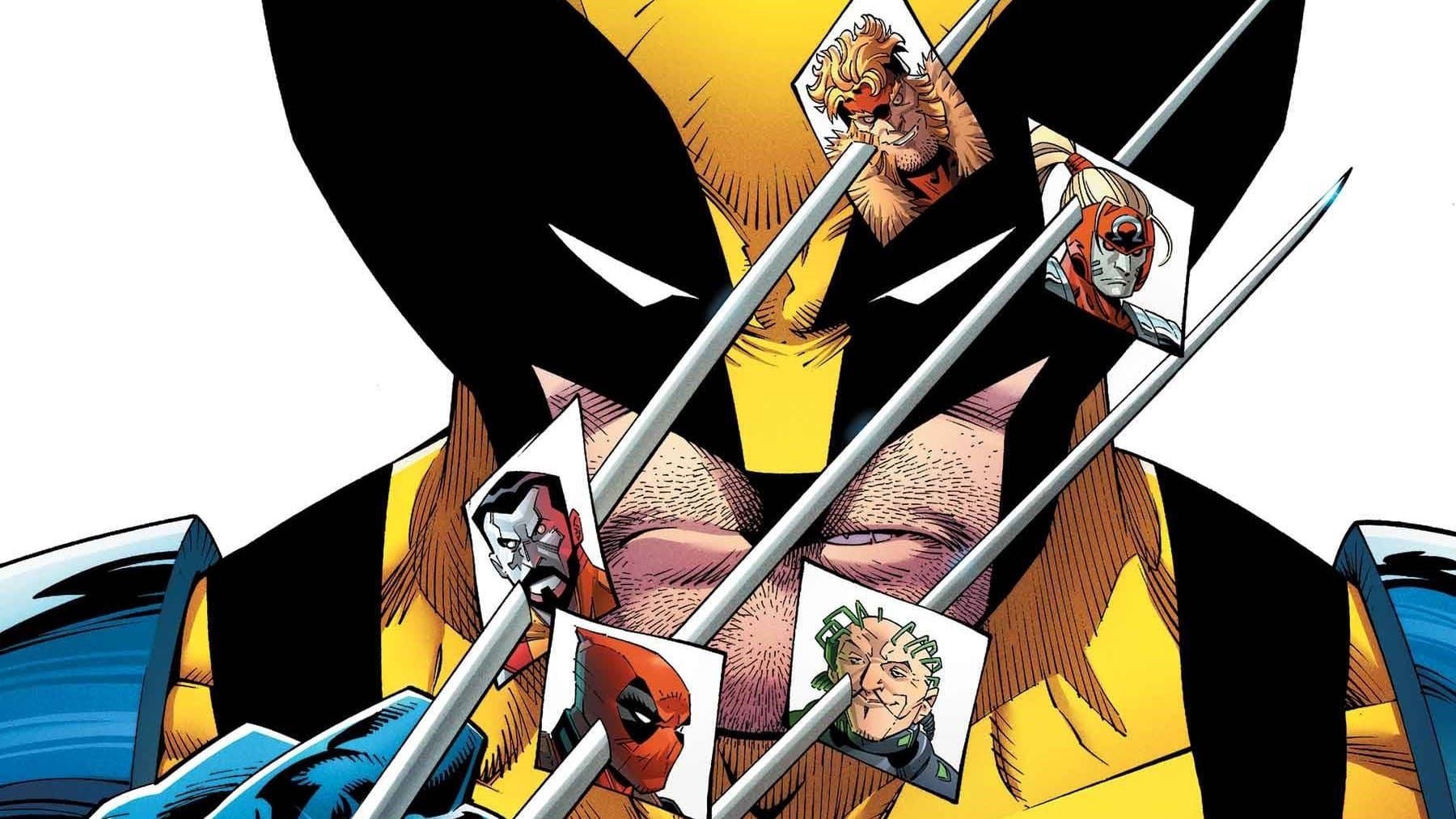What happens when a mother has taken all she can and decides to go Liam Neeson on everyone? What happens when ponies and Autobots roll out together? What happens when comics’ sickest horror anthology takes on beloved children’s classics? Find out in this week’s Triple Play, as Will Nevin reviews Ice Cream Man #20, Zachary Jenkins reviews Transformers/My Little Pony #1 and Christi Eddleman reviews Bad Mother #1.
Ice Cream Man #20
Writer: W. Maxwell Prince, Artist: Martin Morazzo, Colorist: Chris O’Halloran, Letterer: Good Old Neon, Publisher: Image

In his 1955 “Confidential Files” broadcast on the topic — one that came just after the apex of the moral panic crusade against comic books — television journalist Paul Coates attempted a systematic indictment of “crime and horror” comics, putting together a program that featured U.S. senator-cum-moral crusader-cum-presidential hopeful Estes Kefauver, an artist who renounced his association to the books in question and interviews with kids who recounted their attempts to read the bad, bad books.
But the strangest bit of the 25-minute piece comes as Coates narrates a lengthy “reenactment” of a group tween torture session — one supposedly inspired by comics.
“Horror and crime comics upset kids,” Coates so sagely says during his voiceover. “I’m not talking about any subtle distortion of their emotional makeup. I think that occurs, too. But there’s a more noticeable immediate effect. You can see the tension develop as the story gets more gruesome, and if it’s a bad one, the kid is a mass of jangled nerves by the time he’s through it.”
Coates was wrong, of course, as was Kefauver and Fredric f****** Wertham. But that quote — about the nerves and the jangling and the ratcheting tension of “crime and horror” comic books gets at something real: the unsettling churn that you should feel when a dank dark book hits the right way.
“Ice Cream Man” #20 is nominally a parody of “Goodnight Moon,” “The Giving Tree” and “Green Eggs and Ham,” three classic works of children’s literature, but simple, straightforward parodies would be beneath this series and these wizarding creators. Instead, the thing that makes this so damned unsettling and nerve-jangling is the connective tissue between the parodies that elevates what would otherwise be a fine book into the nauseatingly good thing that it is.
To be clear, the parodies slap, and while your mileage may vary, I see the “Goodnight Moon” riff as slapping the hardest. (A line like “Goodnight girl who’s heating a spoon” will do that. However, “The Giving Tree” is a strong No. 2, and certainly the sort of demented thing Shel Silverstein would have enjoyed.) Visually, all three are perfect representations of what they aim to be; poor Martin Morazzo and Chris O’Halloran — the impossible is continually asked of them, and yet they continue to deliver. Good Old Neon’s lettering also shines here, seamlessly contributing to the various reproduced aesthetics.
Again, though, The Thing in this book that’ll fill your gut full of spiders and rattle your spine to pieces is the meat sack that binds it all together. Rick, our titular demonic sprite, is putting his children to bed with these stories, and the kids are dressed … I don’t want to say specifically, but I’ll offer generally that their PJs are weird. And mom? Well, she’s indisposed. Overall, “unnerving” and “unsettling” are only words — this stuff is effed right the hell up.
“I don’t know how you like it,” Coates says in concluding his segment arguing that kids can learn torture techniques via comics, “but it makes me kind of sick.”
The sinewy bits of “Ice Cream Man” #20 are sure to make anyone sick — in the best and smartest of ways.
Transformers/My Little Pony: Friendship in Disguise #1
Writers: James Asmus, Ian Flynn; Artists: Tony Fleecs, Jack Lawrence; Colorists: Fleece, Luis Antonio Delgado; Flatting: Lauren Perry; Letterers: Jake M. Wood, Neil Uyetake; Publisher: IDW

At the fall sports banquet my senior year of high school, I was dealt a crushing blow. I did not win the Iron Eagle, a trophy given to the heart, soul and throbbing muscle of the soccer team. The coach’s son-in-law (who wasn’t even our best midfielder) won it instead. This was a major disappointment and one that definitely doesn’t bother me to this day.
However, there is a new addition to my personal pit of despair, a day I will always look back on with sadness, with the shattered dreams of what could have been. That is the day I read Transformers/My Little Pony: Friendship in Disguise! #1.
You see, there is a line between stupid and brillant, and based on the title and cover alone, this comic looked like it would perfectly balance on that line. It would join such crossover luminaries as Godzilla Vs. Barkley, Archie Meets the Punisher or Batman/Elmer Fudd. But this comic isn’t filled with the winking irony or meta-humor that someone who recently realized that More Than Meets The Eye is one of the greatest comic runs of all time, and who also went through a regrettable Brony phase, would want. Instead, we get two boilerplate, boring stories about emotionally well-adjusted robots landing in Equestria.
In James Asmus and Tony Fleecs’ “Transformation Is Magic,” Princess Twilight Sparkle meets Optimus Prime, Bumblebee and Windblade as they realize that a spell of Queen Chrysalis has caused Megatron and his Decepticons to land in Ponyville. Meanwhile Sonic The Hedgehog writer Ian Flynn and Transformers: Lost Light artist Jack Lawrence tell the tale of Arcee and Rarity fighting Starscream. These are full spoilers for the comic because absolutely nothing happens. Both stories promise to continue next issue, but there are no emotional stakes here. There is no tension between the warring robots and the peace-loving ponies, no question about how this will mess with the land, nothing to sink your teeth into.
This lack of meat extends to the art as well. Both Fleecs and Lawrence draw the Equestria Girls on model, but those Robots In Disguise look frumpy and weak. There is no juxtaposition between the styles, no reason to believe these machines are out of place. It’s squandered potential.
On his first page, Asmus writes a gray-maned stallion complaining about a comic crossover. He acts as if he knows better than the writer, complains about continuity, still buys a second copy. The shop owner reminds him, “it’s just supposed to be for fun.” It’s Asmus’ reminder to the audience that their job is to read the comic and pull some enjoyment out of it. Unfortunate then that the creators forgot to do their part; they forgot to give readers something to enjoy.
Bad Mother #1
Writer: Christa Faust, Artist: Mike Deodato Jr., Colorist: Lee Loughridge, Letterer: Dezi Sienty, Publisher: Artists Writers & Artisans

If you told me there was a comic equivalent of Taken that substitutes a mom for Liam Neeson, you’d definitely pique my interest. While Bad Mother shares some similarities with the film franchise, our mom, April, is no Liam. In fact, she’s fairly average and recognizable to most moms. You might say I was in this comic and didn’t like it.
In Bad Mother #1, Christa Faust and Mike Deodato Jr. depict April as a woman to whom things happen. It’s a trap familiar to moms everywhere: We’ll never be the right size, make the best choices for our kids or even be notable enough to be used as a hostage. Deodato’s art perfectly encapsulates the apparent disdain April has for herself. In fact, April would probably be unlikable if she wasn’t so empathetic. She’s no hero; she’s us. Even during a robbery, we hear her utter the familiar refrain, “Just do whatever they say, and we’ll be OK.” While I’m eager to see April come into her own, we don’t get there in issue one of this five-part mini. We’re left to hope and assume that this growth is coming.
A glimmer of who April might become is found when she goes to bat for her daughter, the most likely catalyzing factor for the promised gun-toting heroine that graces our cover. Without this moment of motherly ferocity, I don’t know that I’d want to read issue two. It feels a bit slow for a first issue, spending much of its time laying the groundwork for April’s character.
Even though I prickled at Faust’s dialogue in the tired, mean-mom exchange in the grocery store, there was more that I find relatable in this issue when viewing it through the lens of motherhood. Deodato’s extreme juxtapositions between scantily clad women and April’s baggy pants border on feeling a bit overdone, but work when contextualized by April’s self-perception.
While it did not blow me out of the water, Bad Mother #1 has my attention, and I’m interested to see where it goes.


